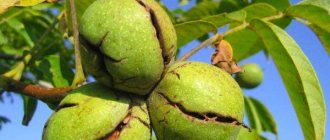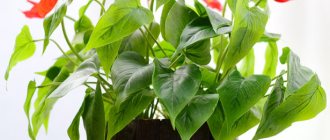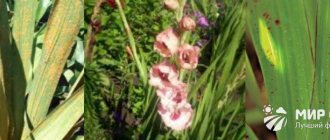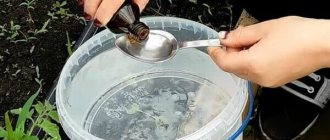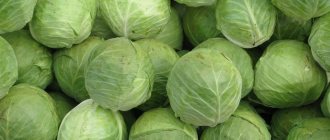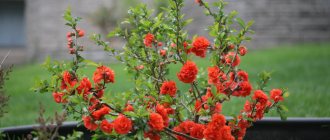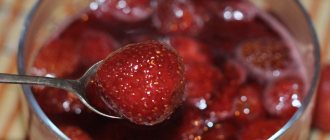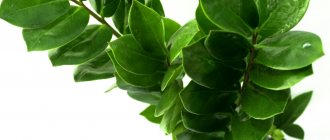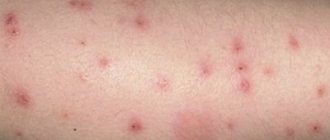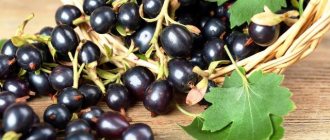Anthurium is a perennial indoor plant that looks attractive regardless of the time of year. The flower is especially beautiful during flowering, when blankets of pink, white, purple and red colors appear on the plant. This is not to say that the plant is capricious, but if not cared for properly it can get sick. In the article we will consider the question: “Anthurium diseases caused by viruses, infectious and non-infectious.” We will try to understand the reasons for the yellowing of foliage and consider the question of how to avoid mistakes when growing anthurium at home.
Anthurium flower - male happiness: description of the plant
Anthurium is an evergreen plant. The tropics are considered the birthplace of the flower. Particularly beautiful during flowering. It is for the bizarre shape of the flowers that anthurium is called flamingo flowers.
The flower, a photo of which can be seen in our gallery, is popular both among ordinary amateur flower growers and among professional collectors. Homemade anthurium can be used for interior decoration; leaves and flowers are used to create compositions and elegant bouquets.
The flower is notable for the fact that it can stand in a vase for a long time when cut. However, there are many diseases to which this beautiful plant is susceptible.
How to save an anthurium if there is a stump with leaves left
The luxurious anthurium was crushed, rotted, and a stump with leaves remained? You will have to use a radical method of preserving the culture: completely cut off the stems, leaves and flowers, remove the anthurium from the soil, carefully examine the rhizome for rotting, clean or cut it, treat it with an anti-parasite agent. Replant into a healthy soil mixture.
Anthurium requires urgent transplantation
Anthurium is a beautiful and unpretentious exotic crop. When keeping a plant at home, it is worth establishing proper care and disease prevention. The flower will decorate the interior for more than 10 years.
Leaf diseases: description and causes, photos
Anthurium diseases can be not only fungal. There are also viral diseases, infectious and non-infectious. Treatment of flower diseases is impossible with folk remedies alone. It is necessary to apply more fungicides. Such drugs as Fitosporin-M and Fundazol have proven themselves well.
Treatment with drugs should be carried out in well-ventilated areas or, in general, the plants should be taken outside.
Before processing, the flower pot is placed in a large plastic bag. After spraying, tie the bag and leave the plant in such a mini-greenhouse for 15 minutes. When time has passed, you should remove the anthurium from the bag, let it dry and return it to its original place.
After the first main treatment, 7 days should pass, then the treatment should be repeated. A third spraying is required, which is carried out a week after the second treatment.
Pests affecting anthurium
Sometimes the plant can be affected by greenhouse aphids. In this case, yellowish spots appear on the leaves and they curl up. To save the plant, you must immediately treat it with appropriate preparations. Tobacco tincture is used as a folk remedy.
If cracks begin to form on the shoots and the leaves become covered with spots, these are signs of damage by mealybugs. To combat it, karbofos is used.
Anthurium can be affected by scale insects. This can be seen by dark spots on the stems and leaves. Detected pests are removed and the plant is treated with insecticides. You can use a solution of laundry soap with a small amount of kerosene.
Rapid drying of leaves may indicate an aphid infestation. It is necessary to treat the plant with a soap solution or ready-made preparations to combat aphids. After a day, you need to rinse the anthurium with clean water. Re-processing may be required.
You will find the basic rules for the prevention of various diseases and pest damage to anthurium in the following video:
Fungal diseases of flowers, causes and treatment of anthurium
Fungal diseases of anthurium include root and stem rot, fusarium, rust, septoria and powdery mildew. In the fight against diseases, fungicides and special preparations are used to combat diseases of indoor plants.
Root rot
Excessive watering, constant soil moisture, along with low air temperatures lead to a disease such as root rot. When the root system is damaged, the leaves become much lighter than usual, then turn yellow and wither.
If you remove the plant from the pot and examine its roots, you will see that they have lost turgor and become lethargic and soft. If you take a closer look, then, starting from the middle, the roots begin to separate and hang like “rags.”
If the disease is at an early stage, it is necessary to stop watering, remove the plant from the ground, allow the earthen coma to dry and replant it in new nutritious soil. It is important to monitor the humidity in the room.
If upon inspection of the plant it is discovered that the roots are severely damaged, it is necessary to cut off all damaged parts to healthy tissue. The cut areas must be sprinkled with crushed coal.
Attention! When planting in new soil, you must not forget about the drainage layer, which will not allow the roots to rot. Expanded clay can be used as drainage.
To water the plant, it is important to use water with Alirin-B or Fitosporin-M dissolved in it. When preparing the solution, the concentration described in the instructions must not be exceeded.
At an advanced stage, when the entire root system is affected, the anthurium is unlikely to be saved, so it is better to destroy it so that the disease does not spread to other plants.
Stem rot
The disease can occur due to excessive watering and constant maintenance of soil moisture. A decisive factor is also the reduced room temperature.
At the beginning of the disease, vague watery spots, painted black, appear on the leaves. If no action is taken, the disease will begin to spread to other parts of the plant. The affected parts of the anthurium die off over time. If you look at the affected area more closely, that is, through a magnifying glass, you can see a huge number of sporangia. At first they are whitish, then they become black.
It is necessary to isolate the diseased indoor flower from other plants, trim off all damaged parts of the anthurium and treat the plant with a fungicide. It is necessary to carry out 2 treatments with phytosporin with an interval of 1 week between sprayings.
If the disease is advanced, it is possible that the plant can no longer be helped. You need to gain strength and throw away the flower. And inspect all other plants with which the anthurium grew for disease.
How to prevent diseases and pests
In fact, it is very simple to prevent problems in growing; you must strictly adhere to the rules of care:
- regular watering with high-quality water and subsequent loosening of the soil;
- optimal temperature - 18-25 degrees;
- feeding every 3 weeks;
- humidity not lower than 70%;
- spraying and wiping the leaves with a damp cloth.
With proper care, the plant will delight the owner with a healthy appearance and timely flowering.
Some diseases can cause special problems, such as rust on anthurium, and must be treated immediately. Once neglected, the bush cannot be saved. However, most diseases are not fatal, and if the owner takes immediate action, the plant will still delight you with its flowers.
Infectious diseases
Among the diseases spread by infectious means are septoria and fusarium wilt. If the disease is detected too late, it is practically impossible to cure.
Septoria
The presence of the disease is indicated by brown spots on the leaves of plants. They usually have an irregular shape, with a brown or yellow border around the edges. If you look at the spots through a magnifying glass, in the middle of them you can see small black dots - sporangia.
How to treat anthurium leaves from septoria?
If septoria is severely affected, all the foliage will have to be torn off and burned. The air humidity in the room should be reduced. It is recommended to exclude plant care procedures such as spraying foliage.
The flower needs to be fed with complex fertilizers for flowering plants. After inspection for pests, the anthurium must be treated with copper-containing preparations or sprayed with Fitosporin-M.
Fusarium wilt
A rather serious disease in which the foliage withers massively. First it turns yellow, then it dries out and falls off. If you examine the root collar, you will notice a white-pink coating. The infectious disease spreads during watering, when the optimal air humidity does not correspond to the temperature.
Attention! So far, no effective method has been discovered to combat Fusarium wilt. You can try spraying the green mass of the plant with fungicides and spraying the soil with pesticides. To save the plant, it is important to try all methods of control.
Treatment should be carried out three times at weekly intervals. A single treatment has never brought a positive result.
Rust
When the disease occurs, irregularly shaped spots colored light yellow can be seen on the upper part of the leaf blade, and brown spots and pustules can be seen on the underside of the leaf. As the disease develops, the spots spread throughout the entire leaf, the plate withers and dries out. Treatment is carried out using fungicides.
Powdery mildew
It would seem that the plant likes everything, it smells fragrant and pleases the eye, and suddenly an incomprehensible leaf fall begins. What is the reason why the plant’s leaves began to turn yellow and dry? Powdery mildew damage is indicated by a white coating that spreads throughout the entire green mass of the plant. Treatment with Topaz gives good results.
Some general tips for preventing common diseases
The overwhelming number of anthurium diseases could be avoided by following basic rules for caring for it. To prevent fungal infections from attacking the flower, it is enough to follow the watering regime and maintain the necessary air humidity. The plant should not be watered frequently or abundantly. There should be fresh air in the room, but remember that anthurium does not tolerate drafts! Viral infections are carried by insect pests and are more difficult to prevent. Keep the purchased plant in quarantine, change the suspicious soil, treat it with insecticides at the slightest suspicion of an attack by thrips or other sucking parasites. But it’s very easy to fight non-infectious diseases of anthurium. Just follow all the rules for caring for anthurium at home. If you have forgotten them, read the corresponding article on the website.
Viral diseases
Among the viruses that affect anthurium is the bronze virus.
Bronzing virus
An unpleasant disease that manifests itself as discoloration of plant foliage. With the armed eye, you can notice pronounced wrinkles and small through dots on the surface of the sheet.
The virus is spread by insects, such as thrips. The disease cannot be treated; it cannot be cured. The diseased specimen will have to be thrown away. And other indoor plants need to be inspected for the presence of thrips so that they cannot spread the bronzing virus. For processing, you can use Actellik or Aktar.
Non-communicable diseases
The appearance of diseases is promoted by improper care of plants. Non-infectious diseases include smallpox, chlorosis, enation.
Plant pox
When a disease is caused by errors in care, various raised spots appear on the leaves. They can be yellow or yellowish-green in color. Such deformity of leaf plates can occur when the air humidity does not match the temperature.
On a note! We must not forget about timely feeding of anthuriums. After all, healthy specimens are less susceptible to diseases.
Chlorosis
The disease occurs as a result of a deficiency of two important elements - iron and magnesium. Their deficiency manifests itself in yellowing of the foliage or the appearance of yellow stains on the leaf blades.
Enatsii
The disease can be recognized by its ugly leaves. The first sign is that the foliage began to grow unevenly, the plates themselves become convex and humpbacked. Incorrect temperature contributes to the appearance of enation. The room may be too stuffy, too cold, dry or humid. Getting rid of the problem will help by establishing proper care for the plant and following agrotechnical growing practices.
Anthurium diseases and its treatment
Due to improper care, the beautiful decorative anthurium may turn yellow and wither. Trouble occurs when the leaves are exposed to direct sunlight, a sharp decrease or increase in temperature, overflow of soil, or open windows in cold weather. In addition, the plant is susceptible to damage by viruses and harmful spores.
Parasitic diseases: anthurium pests
Parasitic diseases should be included in a separate group of diseases. Oddly enough, even those plants that are properly cared for are susceptible to these diseases. When attacked by pests, leaves, flowers, root systems and green shoots are affected. The main pests of anthurium include:
- aphids;
- thrips;
- spider mite;
- scale insect.
Aphids are a malicious pest; it is advisable to fight them before the insects multiply. When a plant is massively infested with aphids, it becomes increasingly difficult to cure the flower. To combat, you can use chemicals or use a mechanical method of control: hang sticky tapes to catch flies near the plant itself.
The flower is suffering from a thrips invasion. To understand that this particular pest has infested the plant, you need to carefully examine the underside of the leaves. Black dots indicate its presence. The insect is active in spring and summer.
Not only adult thrips are dangerous, but also their larvae. Feeding on the sap of the plant, they gradually lead to its death. Thrips can be controlled using pesticides. It is better to buy in specialized stores, paying attention to the expiration date of the drug.
Insects appear on plants that are not properly cared for. To minimize errors, you need to carefully monitor the anthurium, water it in a timely manner, feed it and, of course, provide the plant with a flow of fresh air by ventilating the room daily.
If an anthurium is damaged by a scale insect, you need to prepare for the fact that the fight against it will be lengthy. And it depends only on the persistence of the owner whether the result will be positive or negative. At the early stage of pest appearance, it is unlikely that you will be able to see them with the naked eye. Bugs have a durable shell, so when treated with chemicals, good results are not always obtained.
Before spraying the plant with insecticides, you need to soap the sponge with laundry soap and wipe the plant itself, leaving the soap foam on the flower for half an hour. Then you need to wash the flower in the shower, let it dry and only then carry out the treatment.
You need to spray the plant 3 times with an interval of 7 days. If this condition is not met, scale insects will appear again, since some of the adult individuals are in the soil.
Attention! When treating anthurium against scale insects, you need to spill the soil with a weak solution of the prepared preparation, or even better, replace the old soil with new one.
Spider mites are no less dangerous pests. Thanks to its vital activity, the leaves of the plant begin to turn yellow, gradually curl and fall off. You can tell that there is a spider mite infestation by looking at the thin web that will be located on the back of the leaf.
The pest can be controlled with folk remedies. First you need to wash the plant in the shower and free it from cobwebs. Then you need to wipe the surface of the leaves, the pot itself, and the window sill on which the anthurium stood with a sponge and laundry soap.
Fungal diseases of anthurium, their treatment
Microscopic fungi may remain on the plant when purchased or appear when watered heavily. Anthurium is a moisture-loving crop, the likelihood of bacteria spreading is as high as possible.
Downy mildew
The leaves of “male happiness” are covered with white, yellowish spots, and gray spores are observed on the reverse side. The source of the disease is a microscopic fungus that is extremely sensitive to moist air. It is easy to cure downy mildew - just reduce the air humidity and treat the crop with contact fungicides (Topaz, Acrobat).
Rust on anthurium treatment
If light spots appear on the upper side of the leaf, and brown spots-pustules on the lower side, there is a high probability that the anthurium has begun to suffer from a fungal infection such as rust. At the bottom of the leaves, spores develop quite quickly, the spots merge together, and the leaves dry out. To treat the disease, fungicides are used (Albit, Alirin, Fitosporin).
Rust is a common disease of anthurium
Fusarium wilt
Fusarium is transmitted in many ways, including water and air. New fungal spores can grow due to temperature changes and chemical attack. Fungal wilt of anthurium produces a light pink coating on the root collar and wilting of the leaves. The main measure to combat fusarium is prevention, for example, feeding the soil with the antifungal drug Glyokladina. Systemic pesticides “Vitaros”, “Rovral”, “Fundazol” are also well proven in the fight against fusarium.
Septoria
Fungal mycosis appears on the leaves as red spots surrounded by yellow lines. The leaves begin to gradually wither and the plant dies. The main method of treatment is to treat the crop with copper-containing fungicides (Bordeaux mixture, copper sulfate, Kuproxat).
Anthracnose
A fungal disease leads to thinning and drying of leaves. Dry brown spots appear on the edges or in the middle of the leaf blades. Systemic fungicides (Fundazol, Acrobat, Ridomil Gold) will help in the fight against anthracnose. The fungal spores are quite tenacious; if the anthurium cannot be saved, you should treat the neighboring plants with pesticides, heat the old pot and grow a new individual in a safe environment.
Late blight
Symptoms of the disease are the appearance of purple-brown spots on the leaves, their rapid development on the plant and damage to the roots. To destroy late blight, systemic fungicides are used, including Fitosporin-M, Fundazol, Alirin-B, and Previkur. You will definitely have to replace the soil, dip the roots in clean water, rinse and burn the pot. The root system is also treated with a weak solution of potassium permanganate.
Basic care mistakes lead to problems with growing anthurium: video
In addition to diseases caused by viruses, as well as infectious and non-infectious diseases, with improper care you can encounter a number of problems that inhibit plant growth and can lead to disease:
- Irregularly shaped spots on the leaves and the presence of black spots. Such symptoms appear when the pet is kept in a cold room. The problem can be solved by moving the pot with the plant to a warmer room. You cannot water anthurium more often than it should. The plant does not like stagnant water.
- The leaf blades turn yellow and dry out at the edges. If you keep anthurium in a brightly lit place, for example, on a southern windowsill, its foliage will certainly get burned. The problem can be solved by moving the plant to a place with diffused lighting.
- Yellowing and wilting of foliage. The plant does not like the air temperature in the room. For normal growth and development, the optimal air temperature is + 22 °C. During winter dormancy, the plant needs to be kept in conditions at a temperature of + 16 °C.
- The tips of the leaves turn black. This is a clear sign that the soil contains quite a lot of nutrients, especially calcium. To solve the problem, you need to transplant the flower into new nutritious soil.
- Why doesn't anthurium bloom? It is possible that the plant is growing in a dimly lit place and is planted in a pot that is too spacious. The lack of flowering is also affected by low humidity.
- Why does the foliage curl into a tube? The problem may be that the lighting is too bright. In order for the leaves to return to their original position, you will need to remove the flower away from direct sunlight.
- The foliage turns black. Perhaps the reason lies in watering the plant with too hard, chlorinated or cold water. After watering, it is important to ensure that the pot stands in a dry tray. If the plant does not drink all the water, it must be drained from the pan, otherwise the root system may rot. In order to soften the water, you need to add a pinch of citric acid or a drop of lemon juice to it. It is advisable to water with settled water heated to room temperature. When watering, you need to follow the golden rule - everything is good in moderation.
Video: main mistakes in caring for home anthurium.
The yellowing of anthurium foliage depends on many factors. For example:
- excessive soil moisture;
- cramped pot;
- lack of nutrients;
- lack of optimal lighting;
- cold air;
- presence of drafts;
- poor soil.
To understand the cause of yellowing foliage, you will need to analyze the growing conditions and identify mistakes in order to correct the situation for the better.
How to apply for the purchase of anthuriums
It is advisable to send the application in writing to [email protected] We can accept applications by phone 89379684236 (Megafon) from 10.00 to 20.00 (Moscow time).
In your application, indicate the names (or numbers) of the selected anthuriums and the desired price of the plant (division size). The letter must include your full name, postal address with zip code and mobile phone number. The application is not binding; you can adjust (add or remove plants) and even refuse the order. Please note that the quantity of some varieties of anthuriums is limited. After receiving your application, we will contact you by phone to clarify the order details, cost, and delivery. After agreeing on the order, we will provide payment details (100% prepayment only) and send your plants by Russian Post, starting from mid-April until autumn, depending on the region. The average daily temperature should not be lower than plus 10 degrees.
Other plants:
You can buy different varieties of anthuriums in our nursery. We place all anthurium babies in a temporary pot (plastic cup), so the anthurium purchased from us must be transplanted into a permanent pot after receiving the parcel. Watch the video, it clearly shows how to do this.
Soil and peas for anthurium
Anthuriums require soil consisting of several components. How to make a substrate for anthurium, and what pot to choose for this flower.
Homemade anthuriums: description and care
Have you purchased anthurium seedlings from our nursery? Be sure to read this material. In this article you will find a description of anthurium and recommendations for caring for, growing, and replanting them at home.
Anthuriums: Andre, Crystal, Scherzer
Description and cultivation of these three main types of indoor anthuriums at home.
Abutilon: description of the flower and how to buy seedlings
In this article you will find a description of the abutilon plant and recommendations on how to grow and propagate indoor maple at home.
Hibiscus Classic Pink - description and sale
Rooted hibiscus cuttings Classic Pink - 300 rubles. Blooming hibiscus seedling Classic Pink - 600 rubles.
Buy hibiscus Creole Lady
Rooted hibiscus cuttings (depending on the variety) - from 300 to 500 rubles. Blooming hibiscus seedling - 600 rubles.
Geranium Black Barahat
You can buy a rooted cutting from our nursery (300 rubles) or a flowering plant of Black Velvet geranium (600 rubles).
Coleus plant
Coleus is an ornamental perennial plant. Description of the coleus flower and recommendations for care and cultivation. Buy coleus.
Pachistachis: reproduction and care
How to propagate Pachistachis at home. Recommendations for growing and care. Sale of rooted pachistachis seedlings.
Prevention measures
Proper care of green pets allows you to avoid a lot of problems. Timely and rational watering, sufficient fertilization, optimal lighting and air temperature will allow the flower to feel good and delight the owner with its beautiful blooms.
Unlike fungal diseases, which often appear due to improper care, parasitic diseases damage even well-cared for plants. To avoid many problems, you need to carefully monitor the anthurium and inspect the leaves for pests.
For preventive purposes, it is recommended to give the plant a shower from time to time and wash it with a solution of laundry soap. And if pests are nevertheless noticed, it is necessary to immediately begin to combat them.
Anthurium leaves turn yellow
If you want to have a beautiful, healthy flower with bright and lush blooms on your windowsill, provide it with the necessary care. Violation of agricultural cultivation techniques is one of the most common causes of yellowing of anthurium leaves. Despite other factors, it is the maintenance in the wrong conditions that weakens the strength of the plant. Let's take a closer look at the different types of anthurium leaf diseases and their photos, as well as ways to solve problems :
- Yellowing of the lower leaves. This indicates the aging of the plant. It is necessary to remove the yellowed leaf with a sharp knife. Do the same with subsequent leaves; your plant needs rejuvenation.
- Yellowing of the leaves of a young plant, as well as dark spots, can be the result of sunburn. Although Anthurium is a light-loving plant, it still needs to be shaded from direct sunlight. This flower prefers diffused lighting.
- Fading color of leaves. In this case, the leaves do not turn yellow, but lose their rich, bright green color. In this case, unlike the previous problem, the flower does not have enough light. Perhaps he is standing in a dark place. Then it is necessary to additionally highlight it or move it to a more illuminated place.
- Dark spots on anthurium leaves. Such damage to the leaves indicates that the plant is cold in the conditions where you placed it. The optimal temperature for growing a flower is 18-24°C.
- Young leaves are unusually large and do not have a rich green color. This suggests that the grower overdid it with the amount and frequency of fertilizing. It is necessary to temporarily stop feeding the anthurium and watering it to wash away excess fertilizer. If, on the contrary, you did not fertilize the flower, but there is a problem, then it’s time to add a dose of microelements.
- The tips of the leaves dry out throughout the plant, and sometimes the entire leaf turns black. There may be several reasons: insufficient air humidity, they forgot to water the plant, the roots became too crowded in the pot, too much calcium in the soil.
- Anthurium leaves lose turgor Turgor is a tense state of the membranes of living cells, including leaves. The cells are filled with water and the membranes become stretched and remain in a tense state. Turgor is taken out, but does not fall off. This happens due to waterlogging of the soil. If everything is fine with watering, the root may be infected with rot.
- Dots on leaves. The reason is watering with hard water. Use only soft, settled or melt water for irrigation.
The florist may encounter two more manifestations of incorrect agricultural cultivation techniques. Anthurium may not grow or bloom, may be pale and generally be in a sluggish, depressed state. This indicates insufficient nutrition of the flower. The soil in which it is now planted is too poor in the necessary nutritional components. And if the flower turns black and dries, its natural flowering period may have expired, or the plant may have been exposed to direct sunlight. Often the inflorescence may turn black due to moisture that accidentally fell on it during spraying. Do not forget that the affected leaves or bud must be removed.
